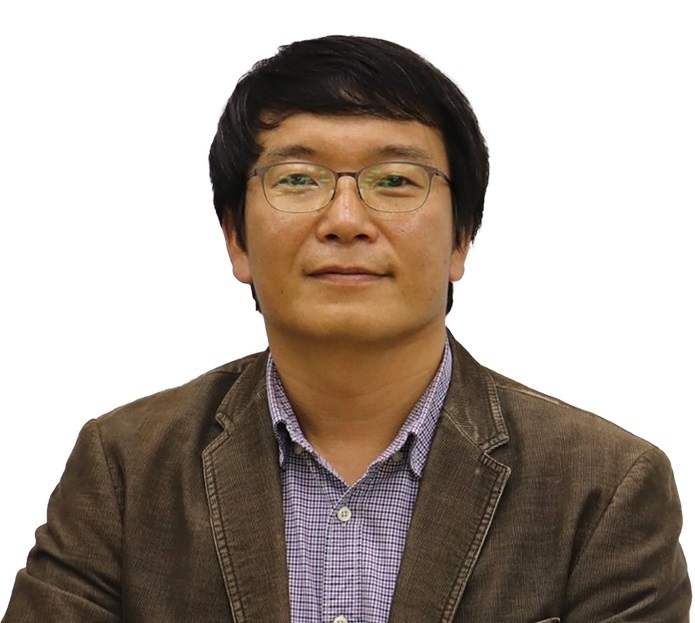Making the most of South Korean demand
 |
| Kyoung-Jin An - Deputy director Vietnam Technology Advice and Solutions from Korea Centre |
The Vietnam Technology Advice and Solutions from Korea Centre (VITASK) is supporting Synic Solution to look for and connect with domestic partners. The company does not disclose the criteria to select domestic partners, and the two parties will privately discuss the cooperation method once Synic Solution meets interested local partners.
Along with Synic Solution, VITASK is helping CammSys Vietnam Co., Ltd, which is one of the subsidiaries of CammSys Corp., with the total investment capital in Vietnam of more than $20 million. It specialises in manufacturing and supplying cameras for Samsung and wants to connect with a suitable partner to develop and assemble electric cars. It is also ready to transfer production technology to develop electric cars in Vietnam. In 2019, the company researched and developed a line of electric cars called CEVO and sold them to the market.
These companies are only two of over 20 South Korean enterprises that want VITASK to look for partners to establish joint ventures and transfer technology.
Establishing joint ventures is suitable with the Vietnamese government’s policy – which is calling on foreign-invested enterprises (FIEs) to increase the localisation ratio.
The problem is that if FIEs such as South Korean groups and their vendors want to increase the localisation ratio, they have to buy more from domestic manufacturers. If they directly invest in Vietnam, the localisation ratio is not calculated, thus establishing a joint venture with the local company is an optimal solution.
The demand of South Korean investors is available, but the number of successful deals is tiny. For example, in the first half of this year, there was one successful deal between Korea Taconic Co., Ltd. and domestic group Achilles Co., Ltd. However, the cooperation result does not match with the initial South Korean company. Korea Taconic wants to partner with a Vietnamese company to establish a joint venture, but it has only just found a distributor.
The problem is that foreign investors face difficulties in approaching domestic partmers, who have a demand to cooperate with foreign counterparts. For example, in August 2020, the leaders of CammSys took part in a field survey in the central province of Binh Dinh and expressed a desire to find a local company. Cammsys was also in talks to partner with Vietnamese manufacturers, but research has yet to bring any results.
VITASK has also worked with numerous management boards of industrial zones to express the intention to sign MoUs to be the bridge for South Korean investors. However, numerous management boards are reserved with this proposal because, according to their practical experience, signing MoUs is not always effective.
Besides that, the pandemic is also a barrier. In order to establish a joint venture, the two parties need to have field surveys and face-to-face meetings to study the operations of each other. In the only successful case between Korea Taconic and Achilles, the representatives of VITASK worked on behalf of the two parties to visit facilities. However, not every company trusts an intermediate party to survey partner operations.
Even when the two parties find suitable partners, it is not always a given that they will reach a final deal due to the differences in mindset, or perhaps the two parties do not reach a compromise on the ratio of capital contribution and profit sahring. For example, when South Korean investors decide the amount of money to invest in a new manufacturing line or upgrade technology, they also want their partners to invest the same amount in training human resources or in any segment to serve for production. However, Vietnamese partners often refuse this requirement. It is one of the main reasons why some deals fall by the wayside.
According to VITASK forecasts, more South Korean groups will pay attention to Vietnam once the two countries elevate ties to a comprehensive strategic partnership. Thus, the demand on looking for domestic partners to establish joint ventures will also increase and we will make an effort to become the effective bridge for the business communities of the two countries.
What the stars mean:
★ Poor ★ ★ Promising ★★★ Good ★★★★ Very good ★★★★★ Exceptional
Related Contents
Latest News
More News
- Global partnerships key to Vietnam’s IFC development (December 26, 2025 | 16:18)
- Vingroup pulls out of bid to invest in North-South high-speed railway (December 26, 2025 | 11:42)
- Strengthening supply chains through trade promotions and customs reform (December 24, 2025 | 14:00)
- PM orders investment model for North–South high-speed rail (December 22, 2025 | 17:43)
- LS Eco Energy to invest in Vietnam rare earth sector (December 22, 2025 | 17:31)
- Government moves to establish International Financial Centre (December 21, 2025 | 21:00)
- Vietnam's IFC to target global investment flows (December 21, 2025 | 18:00)
- Two national hospitals expand capacity with new facilities (December 20, 2025 | 09:00)
- Ha Tinh breaks ground on major Vingroup industrial and energy projects (December 19, 2025 | 18:24)
- EVN launches major power infrastructure projects nationwide (December 19, 2025 | 18:17)

 Tag:
Tag:




















 Mobile Version
Mobile Version